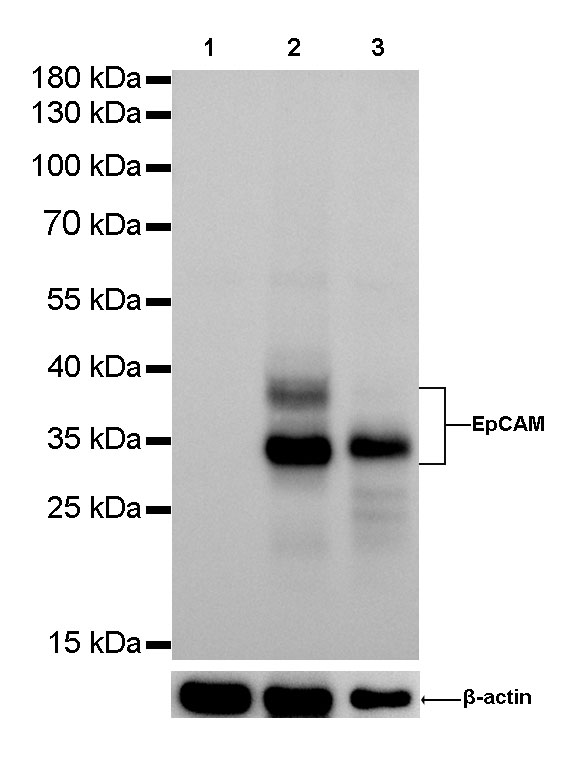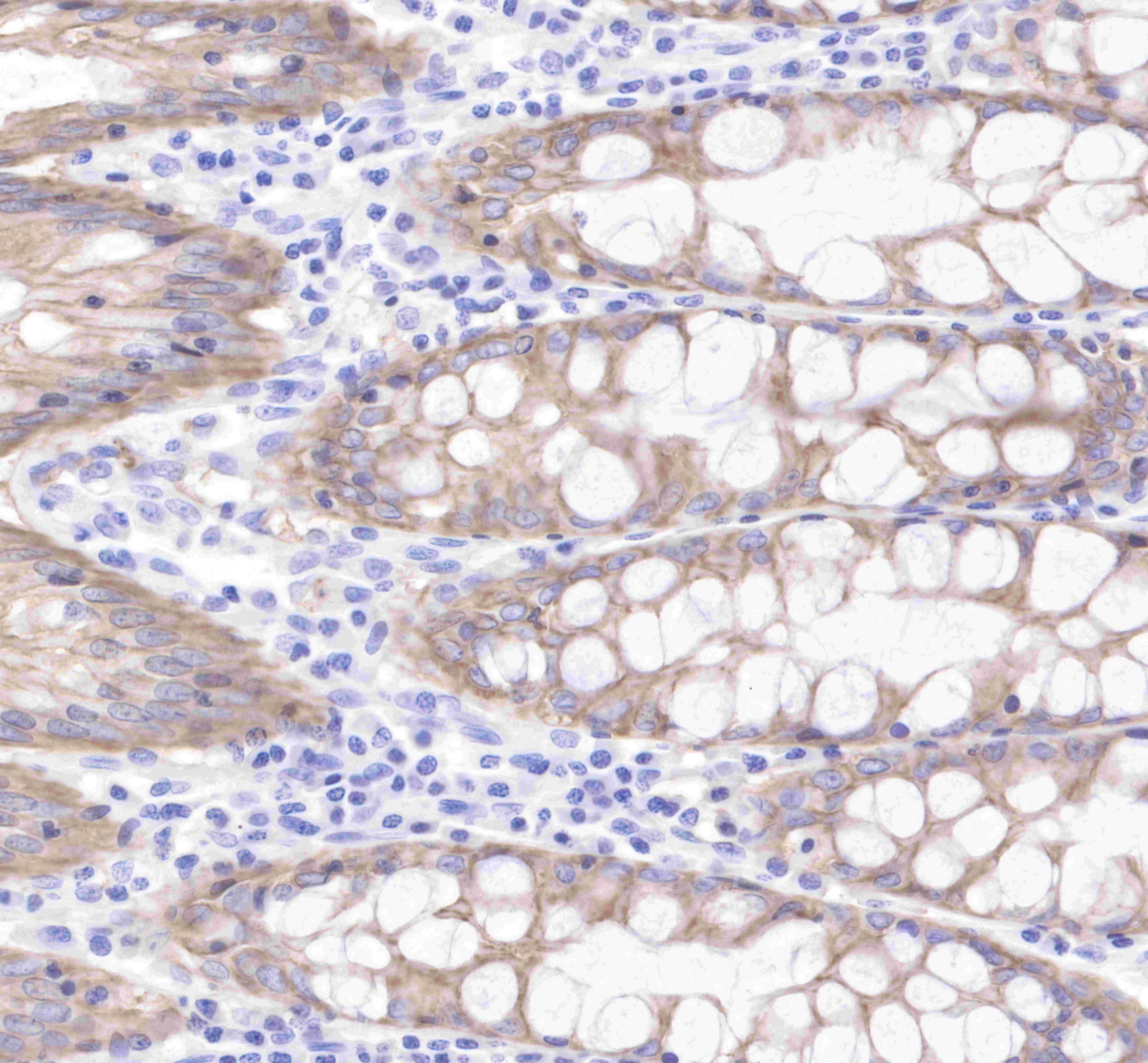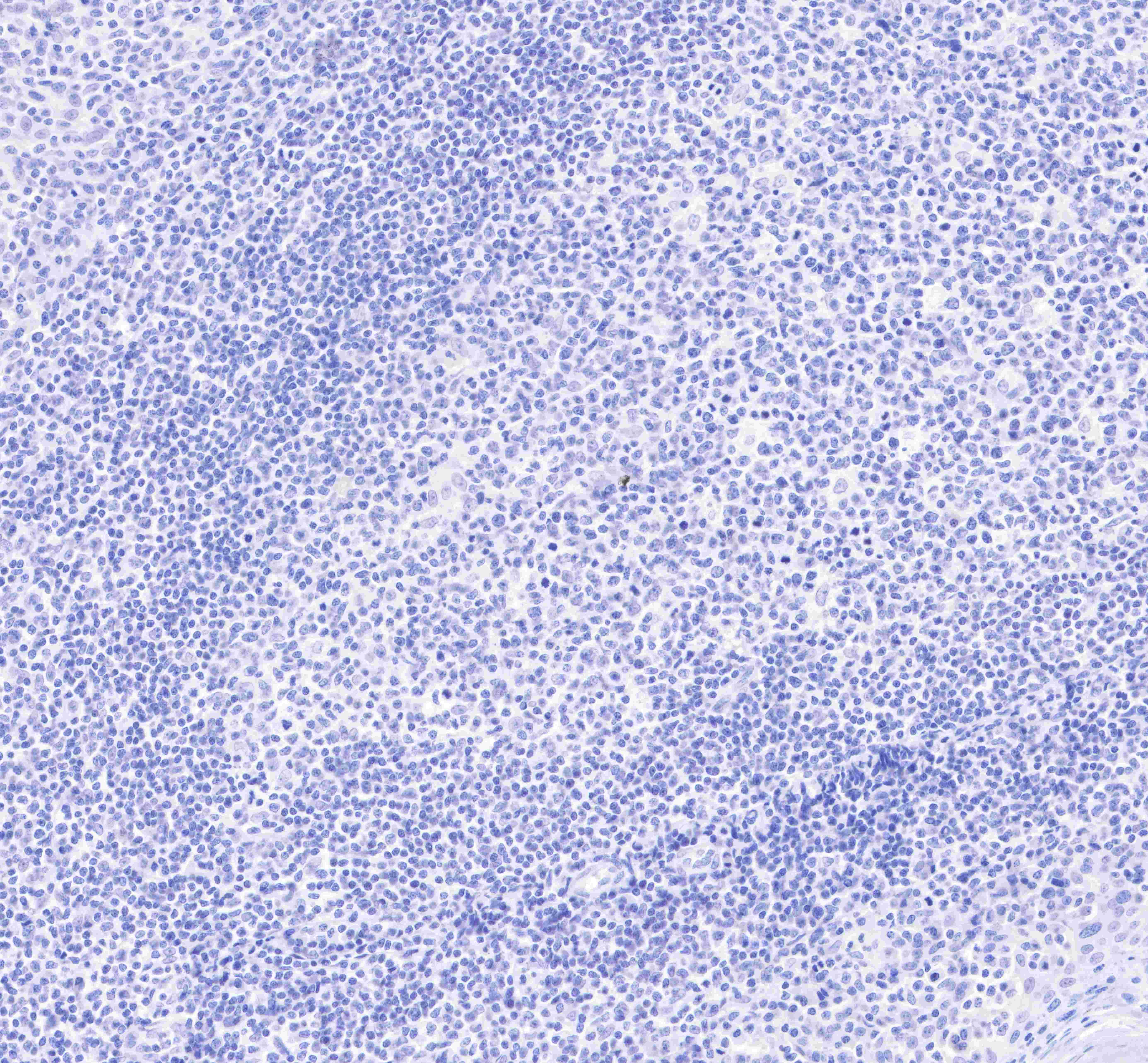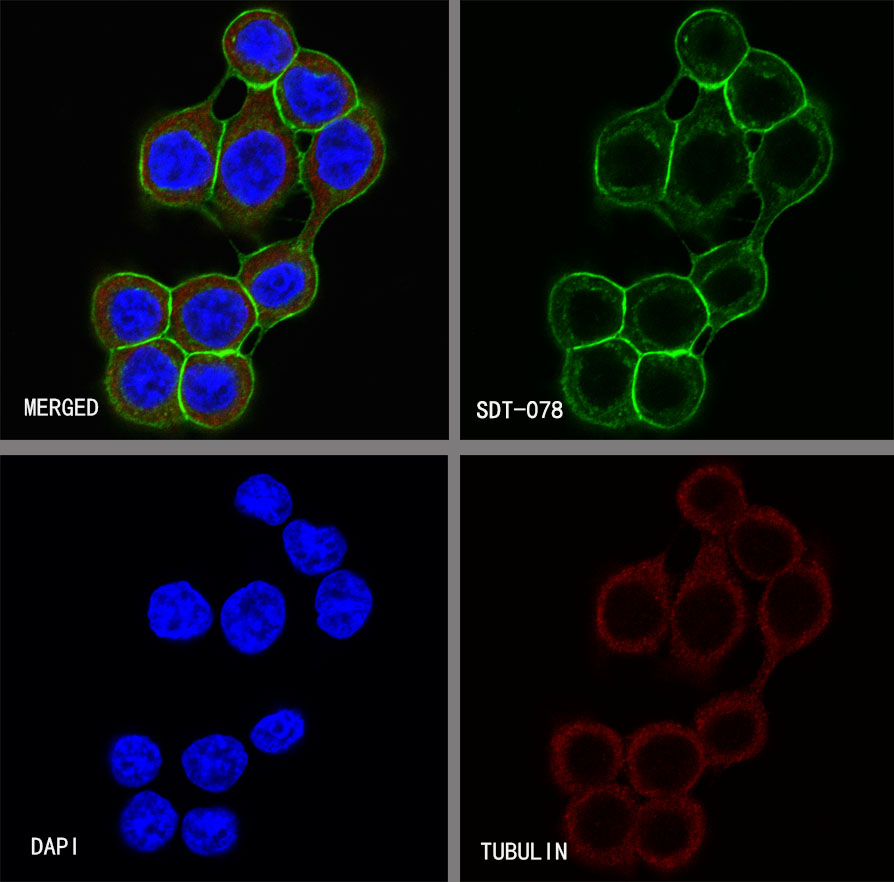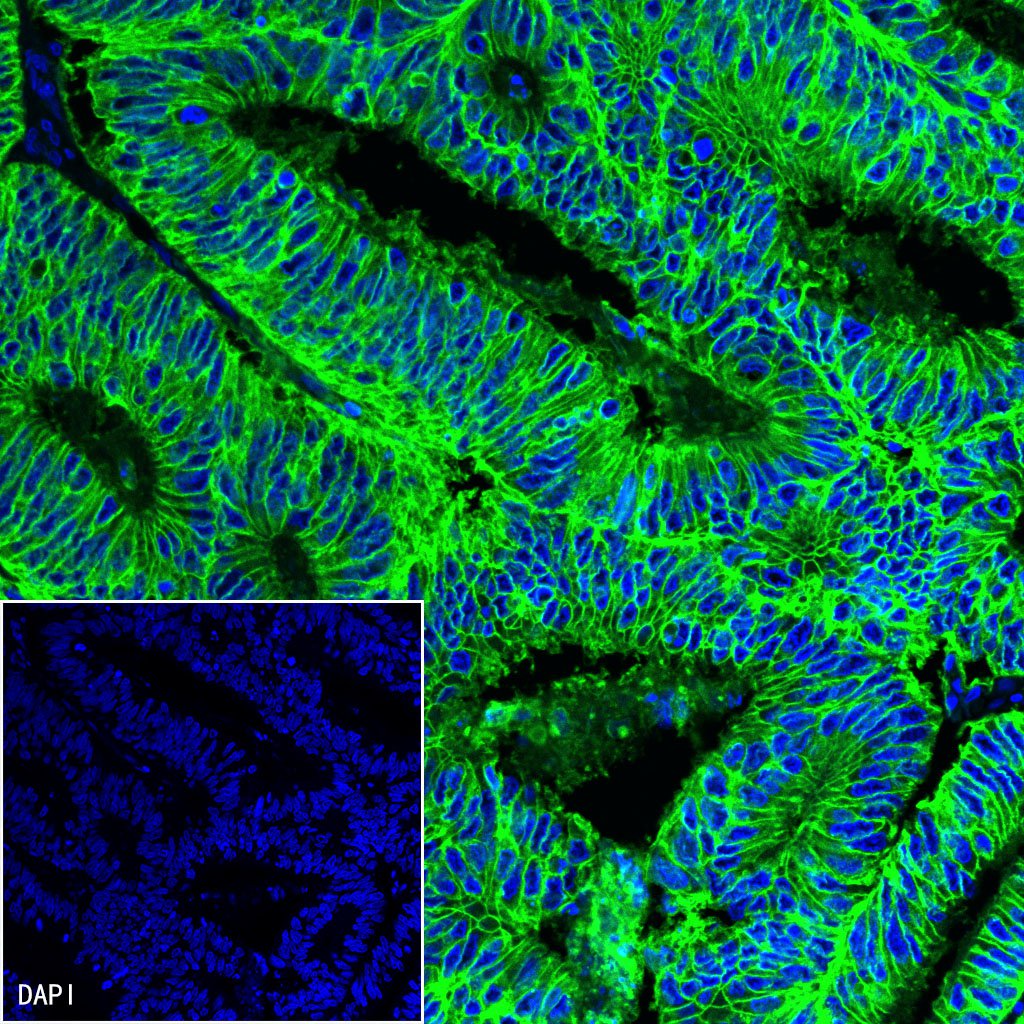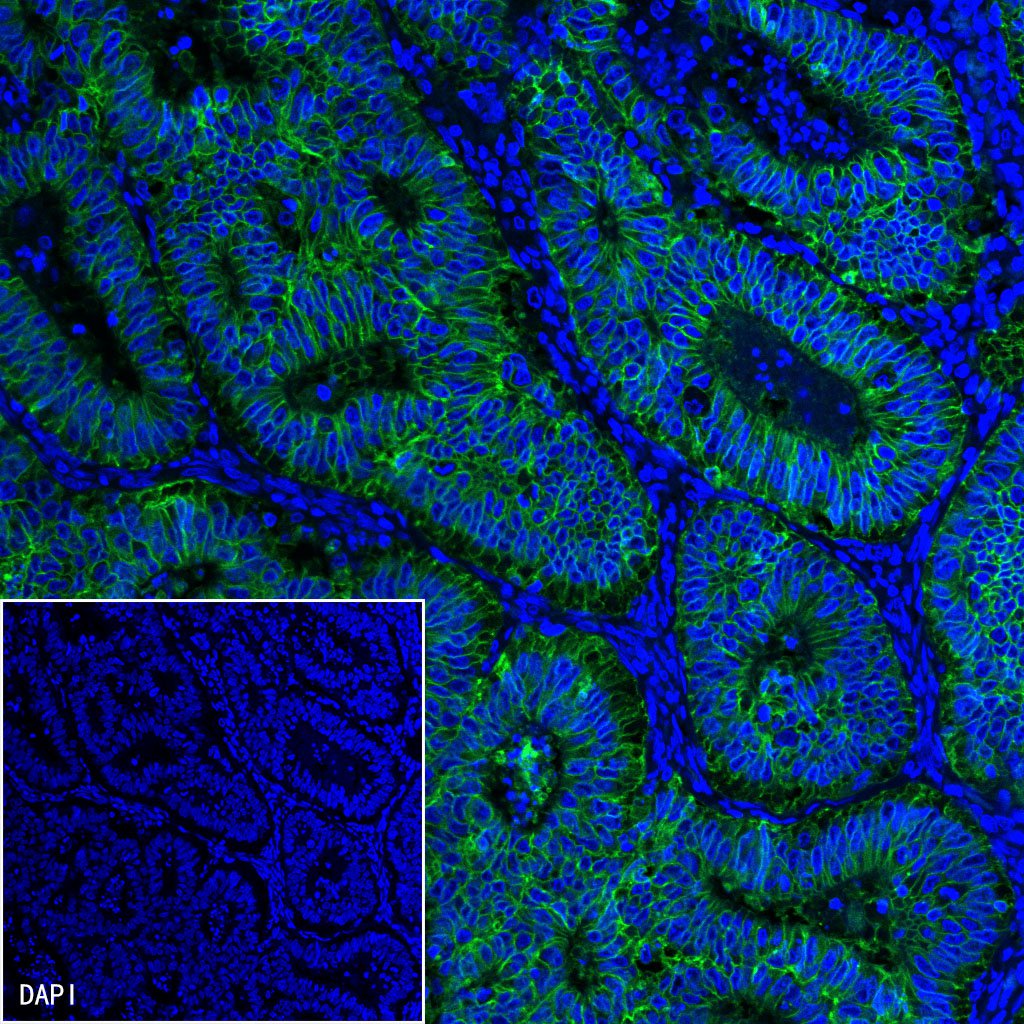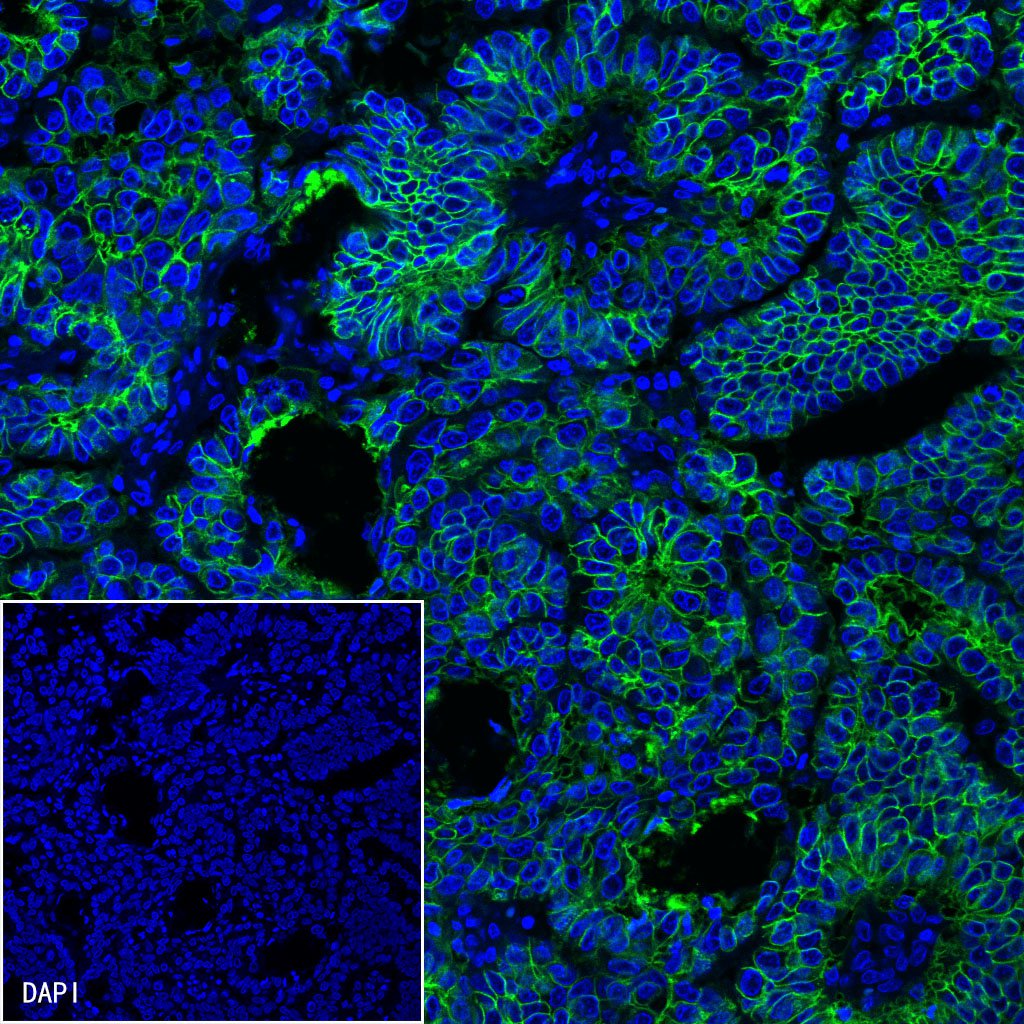Product Specification
| Host |
Rabbit |
| Antigen |
EpCAM |
| Synonyms |
Adenocarcinoma-associated antigen, Cell surface glycoprotein Trop-1, Epithelial cell surface antigen, Epithelial glycoprotein (EGP), Epithelial glcoprotein 314 (EGP314; hEGP314), GA733-2, M1S2, M4S1, MIC18, TACSTD1, TROP1, Ber-EP4 |
| Immunogen |
Synthetic Peptide |
| Accession |
P16422 |
| Clone Number |
SDT-078-13 |
| Antibody Type |
Rabbit mAb |
| Application |
WB, IHC-P, ICC, IF |
| Reactivity |
Hu |
| Predicted Reactivity |
Mq |
| Purification |
Protein A |
| Concentration |
0.5mg/ml |
| Conjugation |
Unconjugated |
| Physical Appearance |
Liquid |
| Storage Buffer |
PBS, 40% Glycerol, 0.05%BSA, 0.03% Proclin 300 |
| Stability & Storage |
12 months from date of receipt / reconstitution, -20 °C as supplied |
Dilution
| application |
dilution |
species |
| IHC-P |
1:500 |
|
| WB |
1:1000 |
|
| ICC |
1:100 |
|
| IF |
1:200 |
|
Background
Epithelial cell adhesion molecule (EpCAM), also known as CD326 among other names, is a transmembrane glycoprotein mediating Ca2+-independent homotypic cell–cell adhesion in epithelia. EpCAM is also involved in cell signaling, migration, proliferation, and differentiation. Additionally, EpCAM has oncogenic potential via its capacity to upregulate c-myc, e-fabp, and cyclins A & E. Since EpCAM is expressed exclusively in epithelia and epithelial-derived neoplasms, EpCAM can be used as diagnostic marker for various cancers. It appears to play a role in tumorigenesis and metastasis of carcinomas, so it can also act as a potential prognostic marker and as a potential target for immunotherapeutic strategies.







